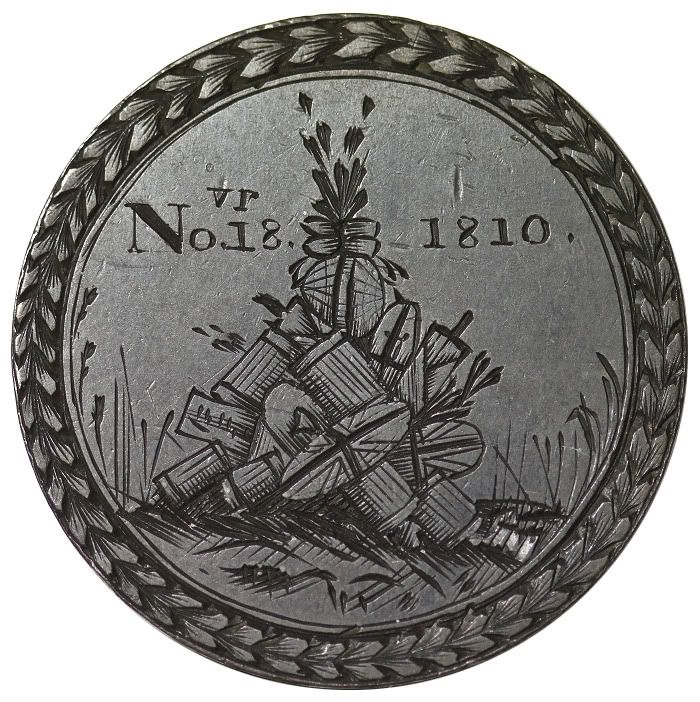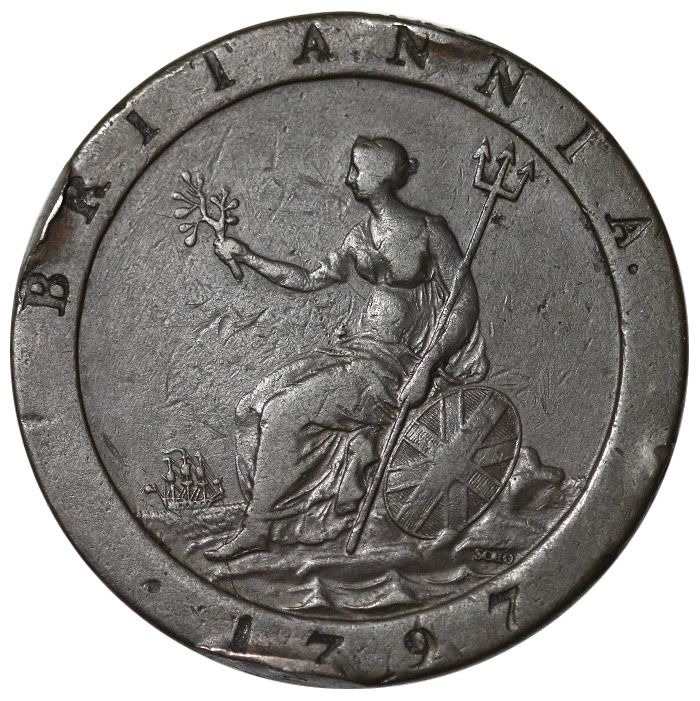Options
Soft spot for Pictorials,
 DUIGUY
Posts: 7,252 ✭✭✭
DUIGUY
Posts: 7,252 ✭✭✭
Sellers pics




“A nation can survive its fools, and even the ambitious. But it cannot survive treason from within. An enemy at the gates is less formidable, for he is known and carries his banner openly."
- Marcus Tullius Cicero, 106-43 BC
- Marcus Tullius Cicero, 106-43 BC
0
Comments
.
CoinsAreFun Toned Silver Eagle Proof Album
.
Gallery Mint Museum, Ron Landis& Joe Rust, The beginnings of the Golden Dollar
.
More CoinsAreFun Pictorials NGC
That knocks my sox off.
Napoleonic war trophies, I gather?
Is it on a 1d or 2d?
Interesting to me that the trophies in a pile include some shields of Britannia, just sort of randomly cast down in the heap. As though these were French spoils of war. But the host coin is British. Got any background information on this piece? I find it fascinating.
<< <i>Wow WOW WOW!!!
That knocks my sox off.
Napoleonic war trophies, I gather?
Is it on a 1d or 2d?
Interesting to me that the trophies in a pile include some shields of Britannia, just sort of randomly cast down in the heap. As though these were French spoils of war. But the host coin is British. Got any background information on this piece? I find it fascinating. >>
Host is a Twopence.
Some 1810 events;
Napoleon marries Marie-Louise of Austria
Louis Napoleon resigns as king of the Netherlands
4,500 chests of opium are sold in China.
- Marcus Tullius Cicero, 106-43 BC
Initially I was baffled by what looked like a Roman numeral six ("VI") above the "NO18" part, but then I realized it's a superscript, lowercase "vr" forming the latter half of the abbreviation for "November".
NO'vr 18, 1810. What happened on that date? This is tantalizing.
<<November 10th, 1810: height of the Napoleonic Wars, in particular, the Peninsular Campaign.
The depiction appears to be military stores, &/or accoutrements, or perhaps trophies, piled in tribute: a symbol of a great victory, or a great defeat, depending upon your perspective. I can see two shields representing the United Kingdom of England and Scotland.
The other side is Britannia, and this is the reverse of a "cartwheel" penny, or perhaps twopence, of 1797. You will see that Britannia is holding a shield, similar to the two on the other side. Originally, the obverse would have shown an effigy of KG3.
This is the sort of item that is nowadays called "trench art": the handiwork of a bored soldier, using the materials readily available, in this case, a low-denomination coin. The soldier may have been a prisoner, but not necessarily so.
Now, here's the mystery: was this made by a Napoleonic soldier, utilizing a captured British penny;
or by a British soldier, using his own penny ?
Was it made by a prisoner, or a soldier relaxing after the battle ?
The answer might be found, if we can discover who the winners and losers on 18.11.1810 were ...
What an interesting piece !>>
- Marcus Tullius Cicero, 106-43 BC
November 18th, 1810 may have been the day of his death.
www.brunkauctions.com
<< <i>Wow WOW WOW!!!
That knocks my sox off.
Napoleonic war trophies, I gather?
Is it on a 1d or 2d?
Interesting to me that the trophies in a pile include some shields of Britannia, just sort of randomly cast down in the heap. As though these were French spoils of war. But the host coin is British. Got any background information on this piece? I find it fascinating. >>
Napoleon issued a decree on November 18, 1810. It basically said that the importation of British goods into France would be punishable by death. This decree must then have resulted in a stockpile of British goods mounting along the port cities.
- Marcus Tullius Cicero, 106-43 BC
Looking closer at the carving, it's sort of appears to be a coastal spot (the grasses sort of look like sea oats), so stuff piled up on the beach could be one interpretation. What I took to be regimental drums at first could be casks and barrels, I suppose. So though it's obviously related to the Napoleonic era, it's perhaps not as military as I initially thought.